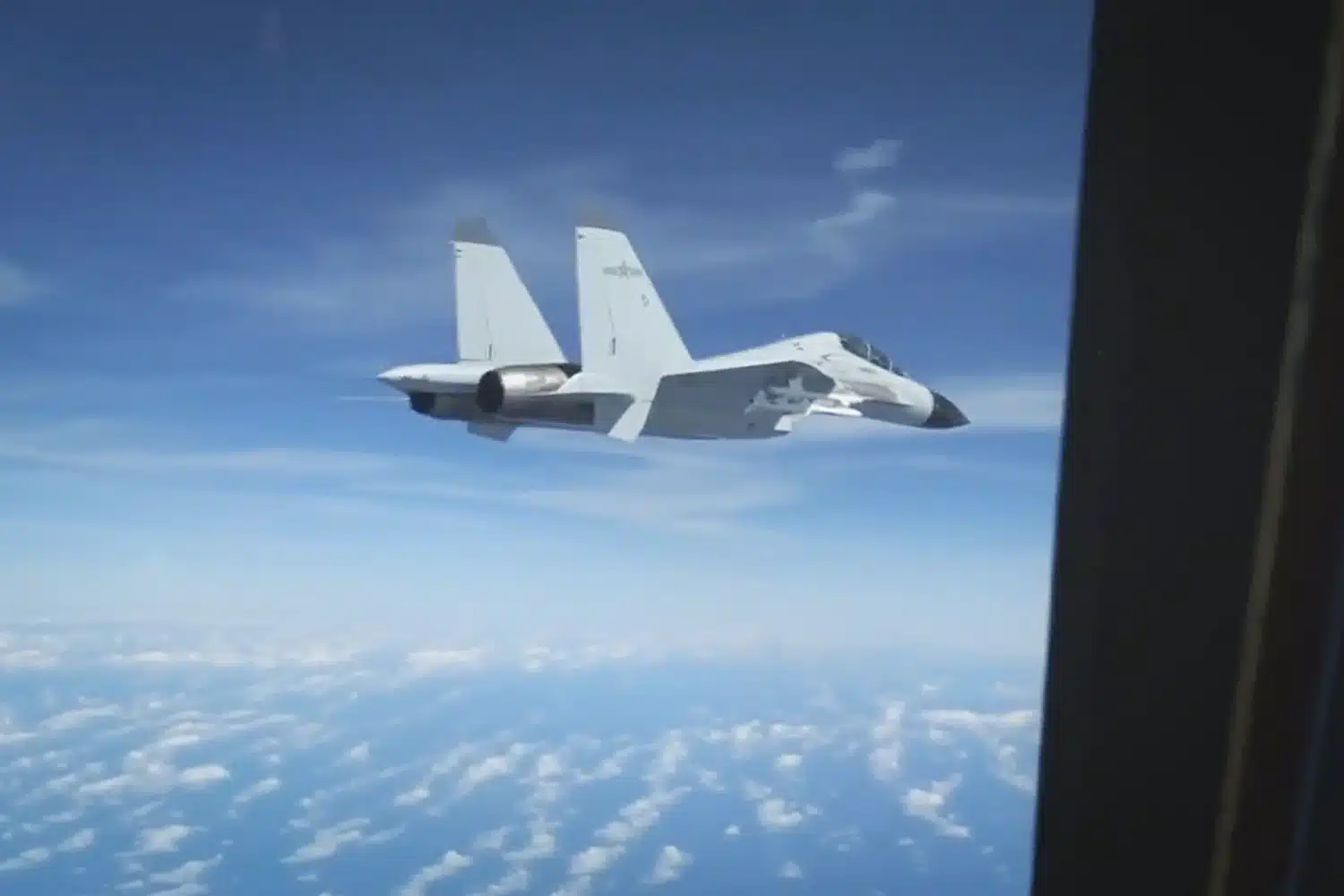The U.S. military on Tuesday said a Chinese fighter jet this past Friday flew aggressively close to a U.S. reconnaissance aircraft over the South China Sea, forcing the U.S. pilot into its turbulent wake.
U.S. Indo-Pacific Command said in a statement that the Chinese J-16 pilot “flew directly in front of the nose of the RC-135” as the American conducted routine operations in international airspace.
Video released by the Pentagon purported to show how close the Chinese jet came to the American one (see photo).
U.S. Defense officials have asserted that China’s military has become increasingly aggressive over the past five years. Those already heightened U.S.-Chinese tensions were only made worse in recent months after the Pentagon in February shot down what it says was a Chinese surveillance balloon over South Carolinian waters after it had crossed the continental U.S.
Tensions have been further aggravated by China’s saber-rattling against its self-governing neighbor, Taiwan. The U.S. has suspected for some time that China is planning to invade Taiwan, though it has been watching and waiting to see how Russia fairs in its invasion of Ukraine before going forth with an assault against the island nation, just one hundred miles off China’s coast.
On Monday, the Pentagon further revealed that China had declined an invitation for its Defense Minister to meet with Defense Secretary Lloyd Austin on the sidelines of a summit in Singapore later this week
Pentagon press secretary Brig. Gen. Patrick Ryder referred to the rebuff by China as a “concerning unwillingness to engage in meaningful military-to-military discussions.” But he did add that the brush-off would not deter the U.S. in its commitment to try to keep open lines of communication with China.
For decades China has challenged military aircraft from the U.S. and its allies, especially over the strategically vital South China Sea, of which China claims it has sole possession. Beijing deeply resents U.S. military assets in the region.
In 2001 a Chinese fighter pilot was killed when his jet and a U.S. surveillance plane collided over the disputed waters.
On Wednesday, China responded to the Pentagon by calling for an end to surveillance flights over the South China Sea, referring to them as “dangerous provocations.”
In Tuesday’s statement the Pentagon’s Indo-Pacific Command insisted that the U.S. would continue to “fly, sail, and operate—safely and responsibly—wherever international law allows,” adding that it expected all other countries to do the same.


